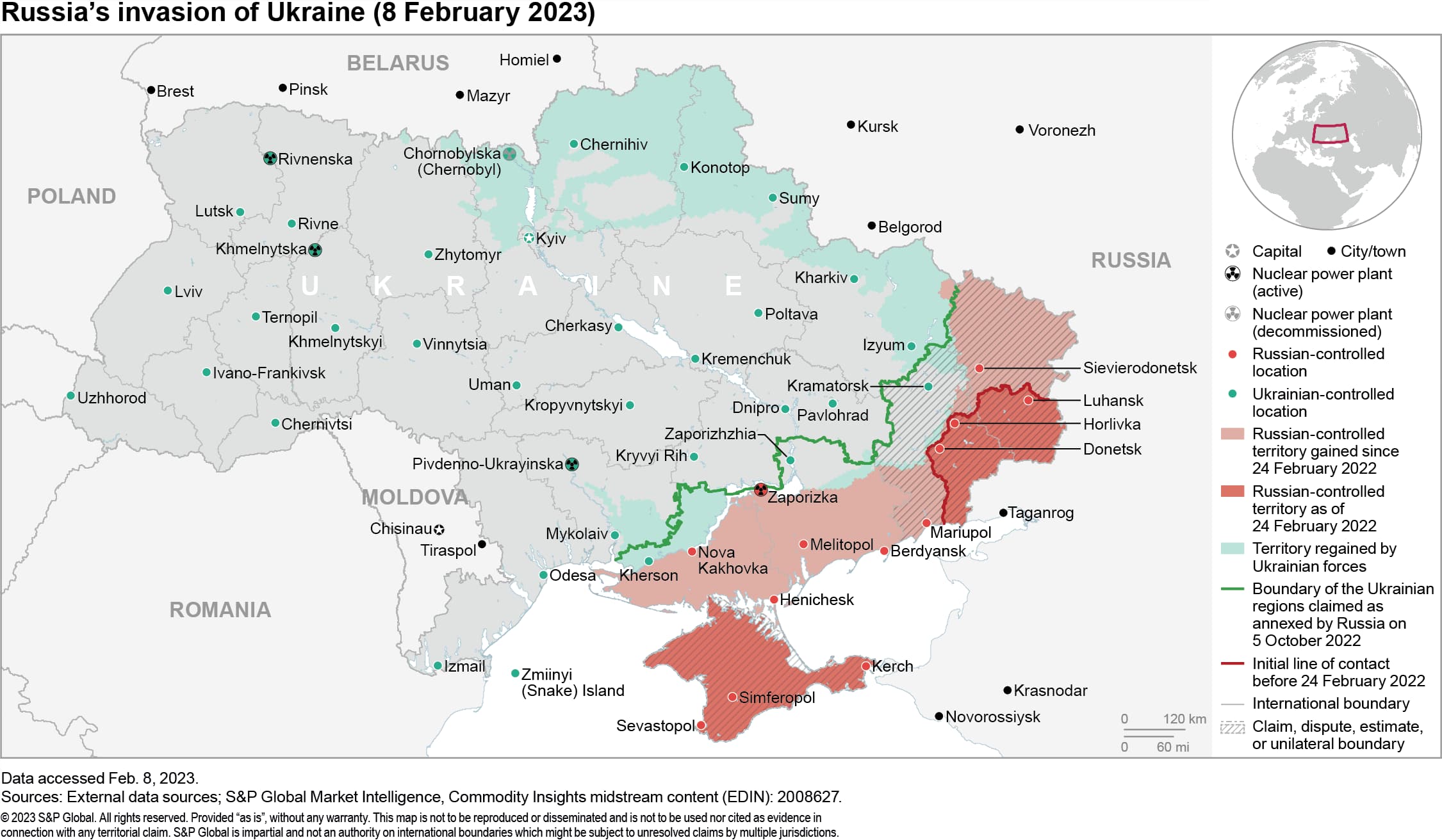S&P Global Offerings
Featured Topics
Featured Products
Events
S&P Global Offerings
Featured Topics
Featured Products
Events
S&P Global Offerings
Featured Topics
Featured Products
Events
Banking & Capital Markets
Economy & Finance
Energy Transition & Sustainability
Technology & Innovation
Podcasts & Newsletters
Banking & Capital Markets
Economy & Finance
Energy Transition & Sustainability
Technology & Innovation
Podcasts & Newsletters
S&P Global Offerings
Featured Topics
Featured Products
Events
BLOG — Feb 10, 2023
Russia is continuing its bombardment of Ukraine, with the conflict now nearly a year on, to wear down the Ukrainian population's support for the war and initiate ceasefire negotiations that would freeze the 1,000-km line of contact.
Russia has increased the intensity of missile and unmanned aerial vehicle (UAV) strikes on cities across Ukraine since early October, launching approximately 1,000 missiles in 14 swarm missile attacks and focusing on critical national infrastructure. Ukraine claims that approximately 80% of missiles and UAVs have been intercepted by its air defenses. Still, the attacks have caused significant damage, including reducing up to 50% of power generation capacity, according to the Ukrainian government, and causing large-scale blackouts.
The Russian strikes do not appear to have had much of an impact on public sentiment in Ukraine. According to the December 2022 polling by the KIIS pollster, 85% of respondents supported continued resistance to Russia.

Future attacks
Future Russian missile attacks will likely lead to more widespread and lengthy infrastructure disruption, including in neighboring Moldova. Ukraine is likely to retaliate to this Russian bombardment by conducting long-range UAV attacks on Russian military assets directly supporting the war in Ukraine.
Ukraine is likely to continue its counter-offensive operations in southern and eastern Ukraine, even after Russia annexed four partially occupied regions. Ukrainian forces are likely to try to pre-empt spring Russian offensive operations by launching their own counter-offensives in the Luhansk and/or Zaporizhzhia regions.
Ukrainian Defense Minister Oleksiy Reznikov said on Feb. 5 that Russia was preparing for another large-scale offensive in February 2023. We have not yet seen evidence of Russian preparations for such an operation. Such an offensive might include another Russian ground offensive mounted from Belarusian territory, likely aimed at Kyiv or at cutting key supply lines from Poland in western Ukraine.
NATO aid
The Ukrainian ability to counter a likely Russian offensive in the coming months and resist the Russian air campaign will hinge on increased military assistance by Ukraine's Western partners. The recent announcement of planned deliveries of armored vehicles, including US-, British- and German-manufactured main battle tanks, will improve Ukraine's military capabilities, but the numbers of tanks so far promised to date are unlikely to be sufficient to turn the war around.
The latest NATO countries' announcements to allocate additional military aid to Ukraine — with discussions now moving to potential supply of Western-manufactured fighter jets — are likely to strengthen Ukrainian resolve to seek to regain further territory on the battlefield ahead of any negotiations.
Any Western fighter jets supplied are unlikely to be deployed in time to influence the outcome of fighting on the ground this year. Even if Ukrainian forces manage to recapture more territory in the ongoing counter-offensives, some territories in Ukraine, especially in Donbas and the south, are likely to remain under de-facto Russian occupation for the foreseeable future.
Indicators we're watching
Here are some potential indicators of a changing risk environment:
This article was published by S&P Global Market Intelligence and not by S&P Global Ratings, which is a separately managed division of S&P Global.

